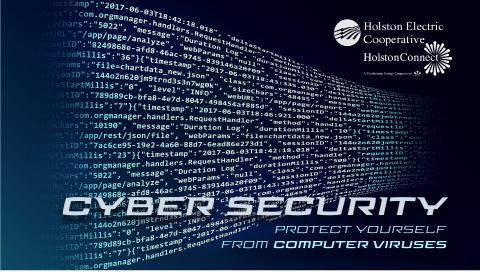
A computer virus is “malware attached to another program (such as a document), which can replicate and spread after human interaction. Many viruses are harmful and can destroy data, slow down your device, and record what you’re typing.”
The terms “virus” and “malware” are often used interchangeably, but they’re not the same thing. While a computer virus is a type of malware, not all malware are computer viruses.
The easiest way to identify computer viruses from other forms of malware is to think about viruses in biological terms. Take the flu virus, for example. The flu requires some kind of interaction between two people like a hand shake. Once the flu virus gets inside a person’s system it attaches to healthy human cells, using those cells to create more viral cells.
A computer virus works in much of the same way:
- A computer virus requires a host program.
- A computer virus requires user action to move from one system to another.
- A computer virus attaches bits of its own malicious code to other files or replaces files outright with copies of itself.
Viruses can’t spread without some sort of action from a user, like opening up an infected Word document. Worms, on the other hand, are able to spread across systems and networks on their own, making them much more widespread and dangerous.
Preventing computer viruses from infecting your computer starts with situational awareness. Situational awareness is something law enforcement and militaries have practiced for decades. It refers to a police officer or a soldier’s ability to perceive threats and make the best decision possible.
As it applies to cybersecurity, situational awareness is your first line of defense against cyberthreats. By staying on the lookout for phishing attacks and avoiding suspicious links and attachments, consumers can largely avoid most malware threats.
Next, invest in good cybersecurity software.
- Antivirus refers to early forms of cybersecurity software focused on stopping computer viruses. Just viruses. Anti-malware refers to all-encompassing threat protection designed to stop old-fashioned viruses as well as today’s malware threats.
Going back to our virus analogy one final time. Removing a virus from your body requires a healthy immune system. Same for your computer. A good cybersecurity software is like having a healthy immune system. As your immune system moves through your body looking for and killing off invading viral cells, cybersecurity software scans for files and malicious code that don’t belong on your system and gets rid of them.

